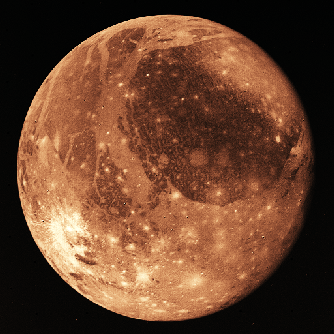
|
Explanation: Ganymede probably undergoes frequent ground shaking events not unlike terrestrial earthquakes. Ganymede, the largest moon of Jupiter and the Solar System, has a thick outer coating of water ice. Passing Voyager spacecraft found a large number of cracks and grooves in the ice so it is thought that Ganymede, like the Earth, has large shifting surface masses called tectonic plates. Ganymede was discovered by Galileo and Marius in 1610, and is larger than the planets Mercury and Pluto. The NASA spacecraft Galileo is scheduled to arrive at Jupiter is December of 1995.
|
January February March April May June July August September October November December |
| ||||||||||||||||||||||||||||||||||||||||||||||||
NASA Web Site Statements, Warnings, and Disclaimers
NASA Official: Jay Norris. Specific rights apply.
A service of: LHEA at NASA / GSFC
& Michigan Tech. U.
Based on Astronomy Picture
Of the Day
Publications with keywords: Ganymede
Publications with words: Ganymede
See also:
